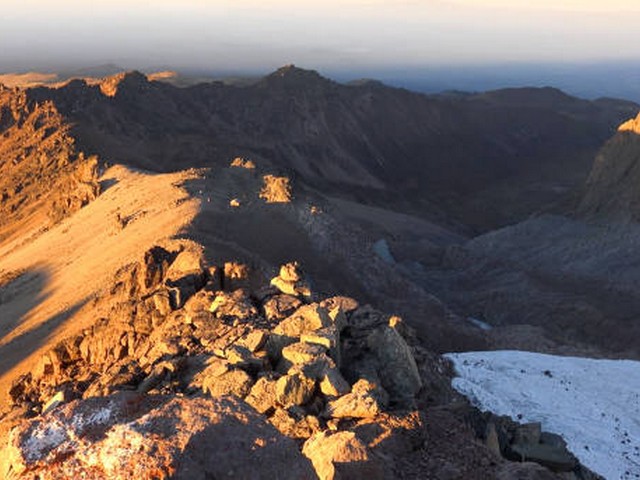How To Photograph People During Kilimanjaro Treks
Capturing the human spirit against the backdrop of Mount Kilimanjaro's majestic landscapes is an exhilarating challenge for any photographer. The journey up Africa's highest peak isn't just about incredible scenery; it's about the people you meet, the stories you gather, and the moments of human triumph and togetherness. Whether you are an amateur shutterbug or a seasoned photographer, this blog post will guide you on how to best photograph people during Kilimanjaro treks, ensuring you come back not just with photos, but with stories and memories. Pack your camera, as we ascend through this photographic journey presented by Kilimanjaro Centre for Trekking and Ecotourism (KCTE).
Capturing the Essence: The Art of Trek Photography
1. Understand Your Subject
Photography on Kilimanjaro is as much about the people as it is about the landscapes. The porters, guides, fellow trekkers – each face tells a story of endeavor, joy, and sometimes, struggle. Take time to know them. A good photograph is born out of understanding the subject. Talk to them, listen to their experiences, and respect their journey. This connection not only adds depth to your photographs but also enriches your trekking experience.
2. The Golden Hours
The soft glow of dawn and dusk, known as the golden hours, provides perfect natural lighting for photography. During these times, the light is soft and evenly diffused, allowing for dramatic photographs of people with Mount Kilimanjaro as a contrasting majestic backdrop. Capture the silhouette of a porter against the rising sun or the tired, yet satisfied, smile of a trekker as the sun sets over the horizon.
3. Candid Moments
Candid photography is about capturing the essence of a moment. On the trek, be it during a challenging climb or a relaxed break, keep your camera ready for spontaneous shots. These are the moments that truly reflect the spirit and emotion of the Kilimanjaro trekking experience.
4. Cultural Sensitivity
When photographing the local Chagga people or your trekking crew, always ask for permission. It's important to approach this with sensitivity and respect for local customs and traditions. This not only shows respect but also opens up a dialogue and deeper interaction with the subjects of your photography.
Technical Tips for High-Altitude Photography
1. Gear Up
High-altitude photography on Kilimanjaro demands appropriate gear. A lightweight, durable camera that performs well in different lighting conditions is ideal. Lenses with a good zoom can help capture distant subjects, such as a fellow trekker across the ridge, without disturbing the moment.
2. Battery Management
Cold weather can drain camera batteries quickly. Carry spare batteries and keep them warm, possibly in an inner pocket close to your body, to prolong their life.
3. Composition
Use the rule of thirds to create interesting compositions. Place your subject off-center to include some of the stunning landscapes of Kilimanjaro. This technique draws the viewer's eye into the scene, making both the subject and the setting compelling.
4. Focus on Details
Sometimes, the smallest details can tell the most powerful stories. The worn-out boots, the grip of a hand on a trekking pole, or the intensity in the eyes of a trekker. Such details often make for memorable photographs that evoke emotion and tell a story.
Engaging Stories Through Your Lens
Every trekker has a unique reason for climbing Kilimanjaro, and each porter has a story that's worth sharing. Use your photography to tell these stories. Combine portraits with environmental shots that include the surroundings to provide context to their journey. These narratives are what make your photographs stand out and resonate with viewers.
Protecting the Beauty We Love
As you capture the beauty of Kilimanjaro and its people, remember also to protect it. Practice ethical photography and trekking. Be mindful of the environment, adhere to the Leave No Trace principles, and engage in sustainable photography practices that do not harm the natural or social environment.
Join Us on the Journey
Eager to put these tips into practice? Join us at Kilimanjaro Centre for Trekking and Ecotourism (KCTE). We don't just offer climbs; we offer an experience, complete with knowledgeable guides who are as passionate about the mountain as they are about preserving its beauty and sharing its wonders.
Booking your Kilimanjaro climb with us ensures a journey filled with impeccable service, expertise, and unforgettable memories. Check out our trekking packages and find the one that suits your adventurous spirit.
FAQ: Photographing People on Kilimanjaro Treks
Q1: What is the best type of camera for Kilimanjaro treks?
A1: A DSLR or mirrorless camera that performs well in varied lighting conditions is ideal. However, even a high-quality smartphone can capture great photos if handled well.
Q2: How do I ensure my photography doesn't interfere with the trekking experience?
A2: Always prioritize the trek and safety. Use your camera responsibly and ensure that your photography does not disrupt others or the environment.
Q3: Can I share or publish the photos of people I take during the trek?
A3: Yes, but make sure you have the consent of the individuals photographed, especially if you plan to share or publish the images for commercial purposes.
Q4: What are some no-goes in photography during Kilimanjaro treks?
A4: Avoid taking photos of people without their permission. Do not engage in photography that could be potentially harmful to the environment or disrespectful to local customs.
By following these guidelines, you can create compelling, respectful, and awe-inspiring photographs of people during your Kilimanjaro trek. Remember, a photograph is not just about capturing faces; it's about capturing stories. Let your camera tell the story of Kilimanjaro, its majestic nature, and its vibrant people. Book your trek with Kilimanjaro Centre for Trekking and Ecotourism (KCTE) today, and turn your photography dreams into stunning realities!




